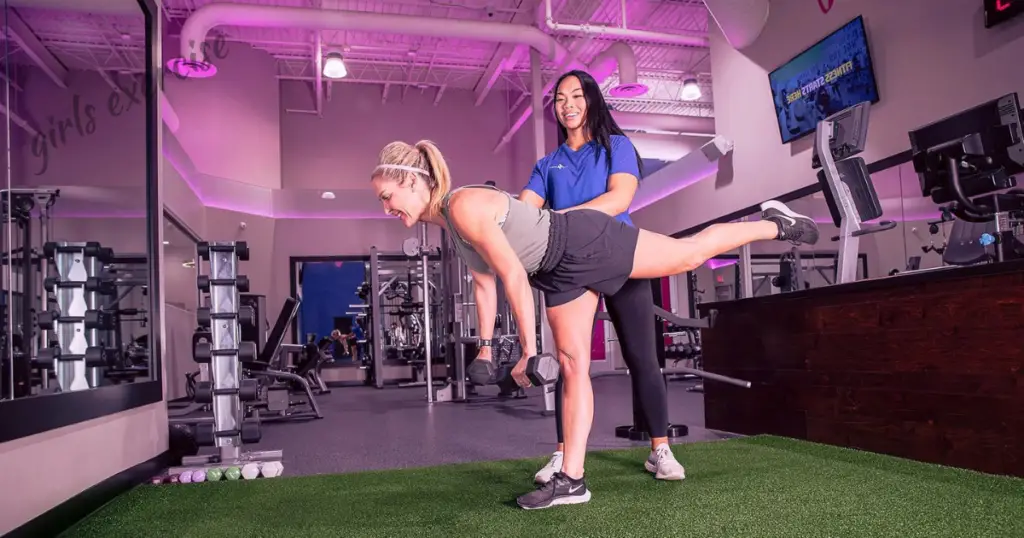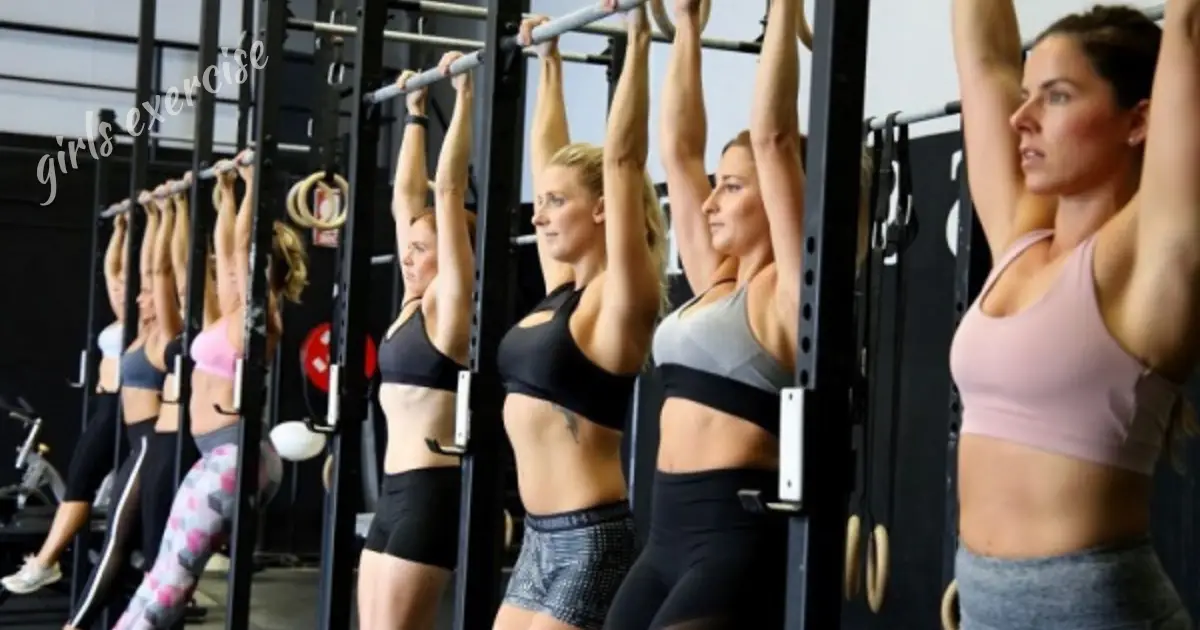In today’s dynamic world, the focus on women’s health and well-being is escalating, with a particular emphasis on Fitness For Women Only. Recognizing the distinct physiological and psychological factors that influence women’s fitness, specialized approaches tailored to their needs have emerged.
This dedicated focus encompasses a comprehensive understanding of women’s bodies, addressing hormonal fluctuations, unique nutritional requirements, and mental health considerations.
In the realm of Fitness For Women Only, through targeted workout routines and holistic wellness strategies, women are empowered to achieve their fitness goals while nurturing their overall well-being. This exploration into women’s fitness offers insights into a realm where individualized care and empowerment intersect, fostering a vibrant community of health-conscious individuals.
Understanding Women’s Unique Fitness Needs:

Recognizing the unique intricacies of women’s bodies throughout their lives is fundamental to tailoring effective fitness regimens. From puberty to menopause, hormonal fluctuations profoundly influence women’s metabolism, muscle mass, and energy levels. This nuanced understanding is particularly crucial for crafting Fitness For Women Only programs.
Understanding these fluctuations allows for precise exercise selection and timing optimization to maximize results. Anatomical differences, such as wider pelvic structures and lower muscle mass, affect biomechanics and injury susceptibility, necessitating tailored strength and flexibility training programs.
Hormonal Influences on Fitness
Delving into the intricate interplay between estrogen, progesterone, and testosterone elucidates how these hormones impact women’s fitness journeys. For instance, estrogen enhances fat utilization during exercise.
Progesterone can lead to increased core temperature and fluid retention, influencing workout performance. Understanding these hormonal dynamics enables coaches and trainers to adapt training protocols accordingly, optimizing results while mitigating potential challenges.
Nutritional Considerations for Female Fitness
Exploring the role of nutrition in women’s fitness unveils the importance of macronutrient balance and micronutrient adequacy in supporting energy levels, recovery, and hormonal health. For example, adequate protein intake supports muscle repair and growth, while sufficient iron and calcium intake are crucial for bone health and energy production.
Tailoring nutritional strategies to accommodate menstrual cycle phases can further optimize performance and recovery, emphasizing the interconnectedness of diet and fitness outcomes in women.
Tailored Workout Routines for Female Bodies:

Crafting workout routines specifically designed for female bodies involves a detailed understanding of their anatomical and physiological differences.
From muscle fiber composition to joint mobility, these nuances influence exercise effectiveness and injury risk. Tailoring exercises to target core strength, pelvic stability, and flexibility maximize functional fitness and prevent imbalances.
Anatomical Considerations
Recognizing that women generally have a higher proportion of type I muscle fibers, which are more fatigue-resistant, informs exercise selection for endurance and stamina training.
Understanding women’s greater joint laxity and wider pelvic structure highlights the importance of exercises that enhance stability and alignment, such as pelvic floor exercises and hip-strengthening movements.
Addressing Hormonal Fluctuations
Considering the impact of hormonal fluctuations throughout the menstrual cycle, workout routines can be adapted to capitalize on hormonal advantages and mitigate challenges.
For instance, during the follicular phase when estrogen levels rise, incorporating higher-intensity workouts may capitalize on increased energy and endurance, especially in Fitness For Women Only. Conversely, during the luteal phase, emphasizing recovery-oriented activities can support hormonal balance and prevent burnout in Fitness For Women Only.
Nutritional Guidelines For Women’s Fitness:
Nutrition plays a pivotal role in optimizing women’s fitness outcomes, necessitating tailored dietary strategies that address their unique physiological needs and lifestyle factors. From supporting energy levels to facilitating muscle recovery, a balanced and nutrient-rich diet is paramount for achieving fitness goals and promoting overall well-being.
Optimizing Macronutrient Balance
Ensuring an adequate intake of macronutrients, including carbohydrates, proteins, and fats, is essential for meeting energy demands and supporting muscle repair and growth. Tailoring macronutrient ratios to individual goals and activity levels can optimize performance and enhance body composition.
For example, prioritizing complex carbohydrates before workouts can sustain energy levels, while incorporating lean proteins post-exercise aids in muscle recovery and repair.
Micronutrient Adequacy and Hormonal Health
Incorporating a diverse range of micronutrients, such as vitamins, minerals, and antioxidants, supports hormonal balance and overall metabolic function. Specific nutrients, such as iron and calcium, are particularly crucial for women’s health, contributing to optimal bone density, energy production, and menstrual cycle regulation.
Ensuring adequate intake of these micronutrients through a varied and nutrient-dense diet or supplementation when necessary can optimize fitness outcomes and promote long-term health and vitality.
Addressing Hormonal Changes And Fitness:

Understanding the intricate relationship between hormonal fluctuations and fitness is crucial for optimizing women’s training programs and achieving peak performance. From menstrual cycle variations to menopausal transitions, hormonal changes profoundly impact energy levels, metabolism, and recovery, necessitating tailored approaches to training and recovery strategies.
Menstrual Cycle Awareness
Recognizing the cyclical nature of the menstrual cycle enables women to leverage hormonal fluctuations to their advantage. During the follicular phase, rising estrogen levels can enhance endurance and strength, making it an opportune time for challenging workouts.
Conversely, the luteal phase, characterized by progesterone dominance, may benefit from more recovery-focused activities to support hormone balance and prevent burnout.
Menopause and Beyond
Navigating menopausal hormonal shifts requires adaptability in training approaches to mitigate symptoms such as decreased bone density and muscle mass. Incorporating resistance training to preserve bone health and promote muscle strength becomes paramount.
Prioritizing stress-reducing activities like yoga or meditation can help manage hormonal imbalances and support overall well-being during this transitional phase of life.
Mental Health And Wellness Strategies For Women In Fitness:

Recognizing the profound interplay between mental health and fitness is essential for cultivating a holistic approach to women’s well-being. Incorporating strategies that nurture mental resilience, foster self-compassion, and promote overall wellness can enhance the effectiveness and sustainability of fitness endeavors.
Embracing Mindfulness Practices
Integrating mindfulness techniques, such as meditation, deep breathing exercises, or yoga, into fitness routines can cultivate greater self-awareness and stress management skills. Mindfulness helps women develop a positive relationship with their bodies, fostering body acceptance and reducing negative self-talk commonly associated with fitness pursuits.
Prioritizing Self-Care and Balance
Encouraging women to prioritize self-care practices, including adequate rest, relaxation, and social connection, is vital for maintaining mental well-being alongside physical fitness. Balancing intense workouts with restorative activities, such as leisurely walks or hobbies, prevents burnout and promotes overall life satisfaction.
Building a Supportive Community
Creating a supportive community of like-minded individuals can provide women with encouragement, accountability, and a sense of belonging in their fitness journey. Group fitness classes, online communities, or workout buddies offer opportunities for camaraderie and motivation, fostering resilience and perseverance through challenges.
By integrating mental health and wellness strategies into women’s fitness programs, individuals can cultivate a balanced and sustainable approach to health that encompasses both physical and mental well-being, ultimately leading to greater overall satisfaction and vitality.
Conclusion:
In embracing the nuanced landscape of fitness for women, it becomes evident that tailored approaches addressing their unique physiological, hormonal, and psychological needs are paramount.
By recognizing and accommodating these differences, fitness programs can optimize outcomes, fostering strength, resilience, and holistic well-being. Ultimately, the journey towards fitness for women is not merely about achieving physical goals but also about cultivating a profound connection with one’s body and nurturing mental and emotional health.
Through mindful practices, supportive communities, and personalized strategies, women can embark on a transformative journey that empowers them to thrive in all aspects of their lives, embodying strength, confidence, and vitality.
Faqs About Fitness For Women Only:
Why is it important for women to focus on fitness specifically tailored to their needs?
Women have unique physiological and hormonal characteristics that require specialized attention in fitness. Tailored programs address these differences, optimizing results and reducing the risk of injury.
Can women engage in the same workouts as men?
While some workouts may overlap, women often benefit from exercises that emphasize core strength, pelvic stability, and flexibility to accommodate their anatomical differences and hormonal fluctuations.
How do hormonal changes impact women’s fitness routines?
Hormonal fluctuations throughout the menstrual cycle affect energy levels, metabolism, and recovery. Understanding these changes enables women to adapt their workouts for optimal performance and well-being.
What role does nutrition play in women’s fitness?
Nutrition is crucial for supporting energy levels, muscle recovery, and hormonal balance. Women may benefit from tailored macronutrient ratios and micronutrient-rich diets to optimize fitness outcomes.
Are there specific mental health strategies tailored for women in fitness?
Yes, integrating mindfulness practices, prioritizing self-care, and fostering supportive communities are essential for promoting mental resilience and overall wellness in women’s fitness journeys.
Can women engage in intense workouts during pregnancy?
It’s essential for pregnant women to consult with healthcare professionals. While some exercise is generally safe and beneficial during pregnancy, it’s crucial to prioritize safety and avoid high-impact or strenuous activities.
How can women maintain fitness goals during menopause?
Menopausal transitions may require adjustments in workout intensity and focus to address changes in bone density and muscle mass. Resistance training, stress-reducing activities, and supportive communities can aid in maintaining fitness goals during this phase of life.



